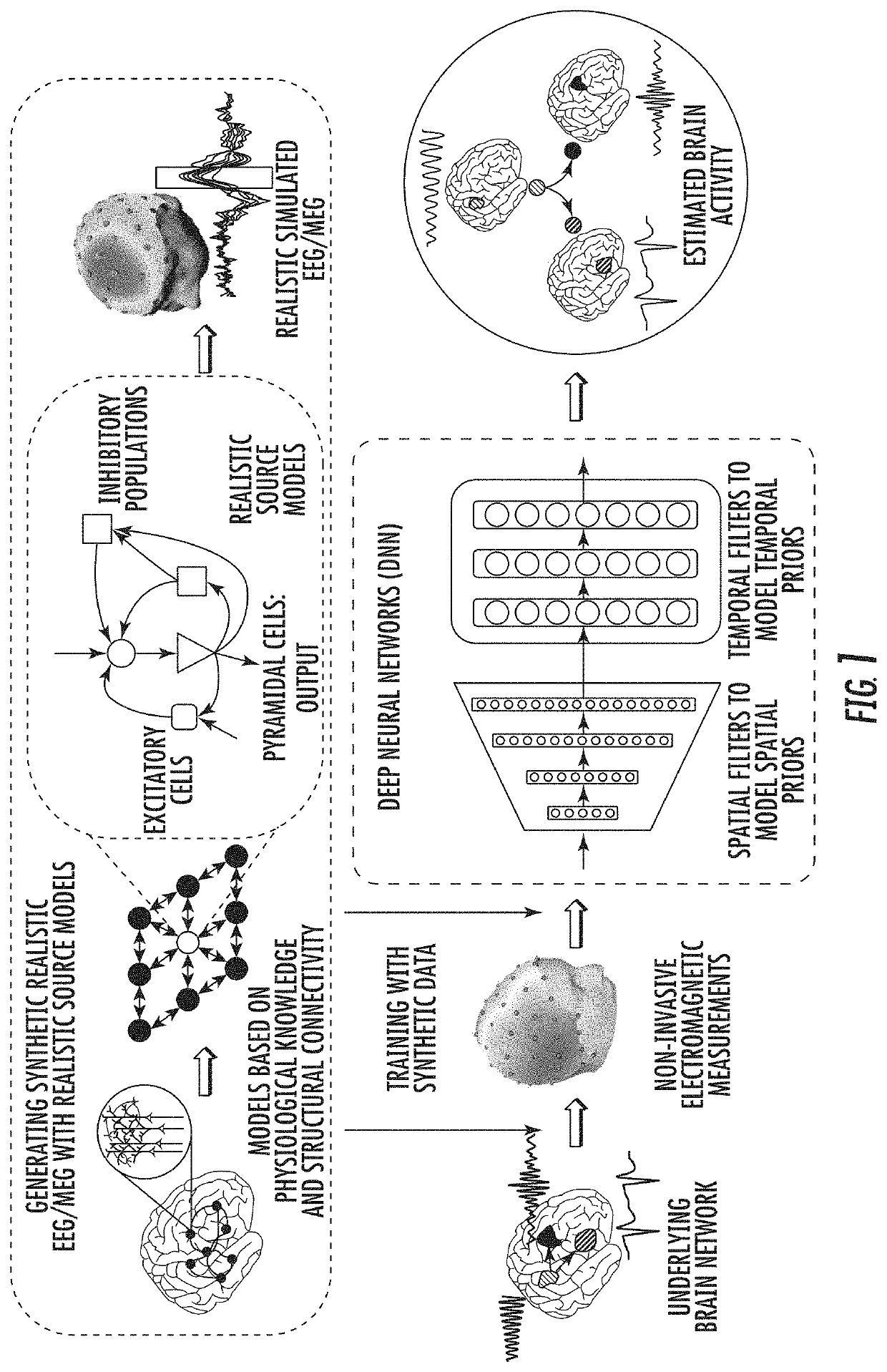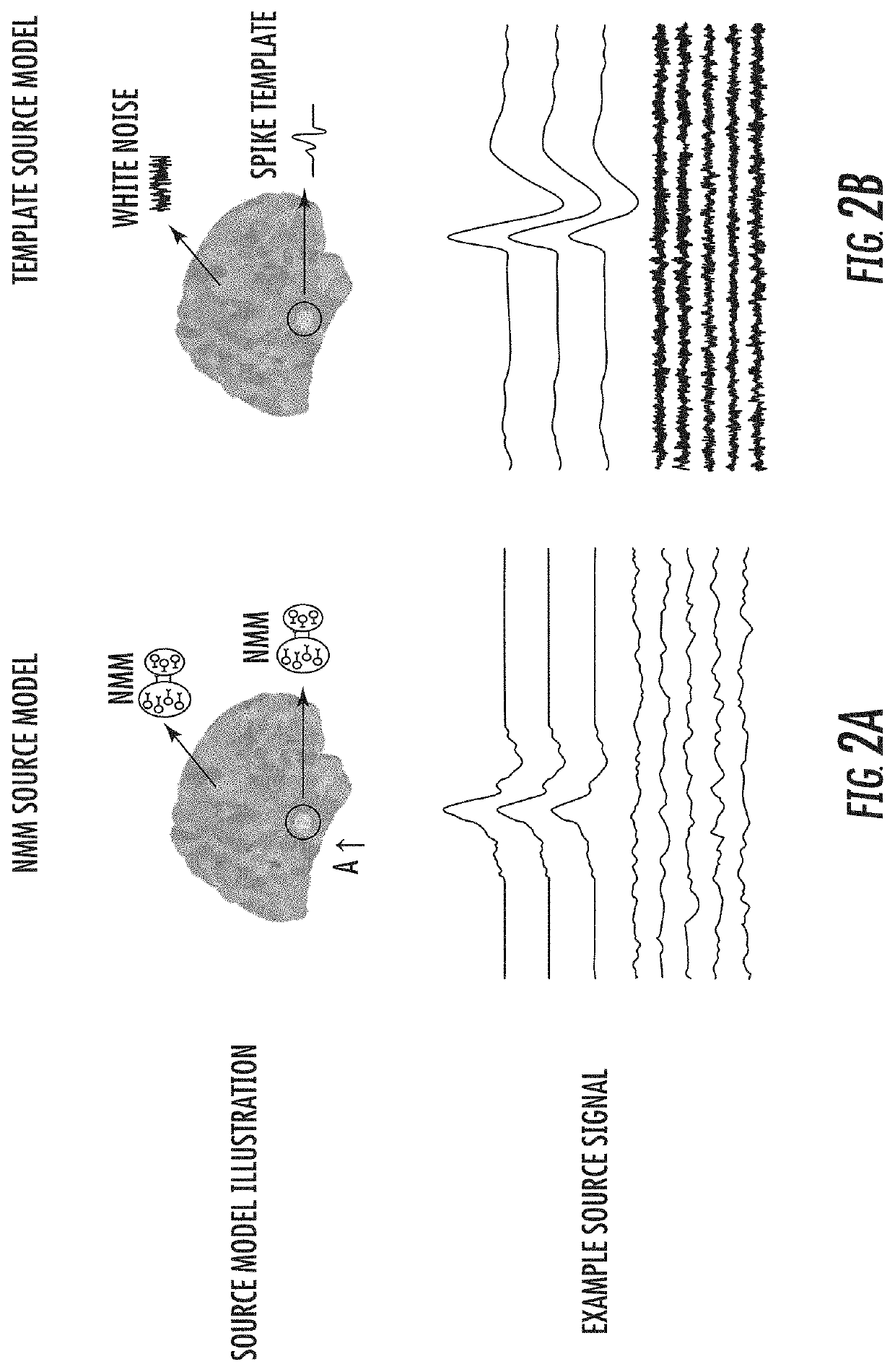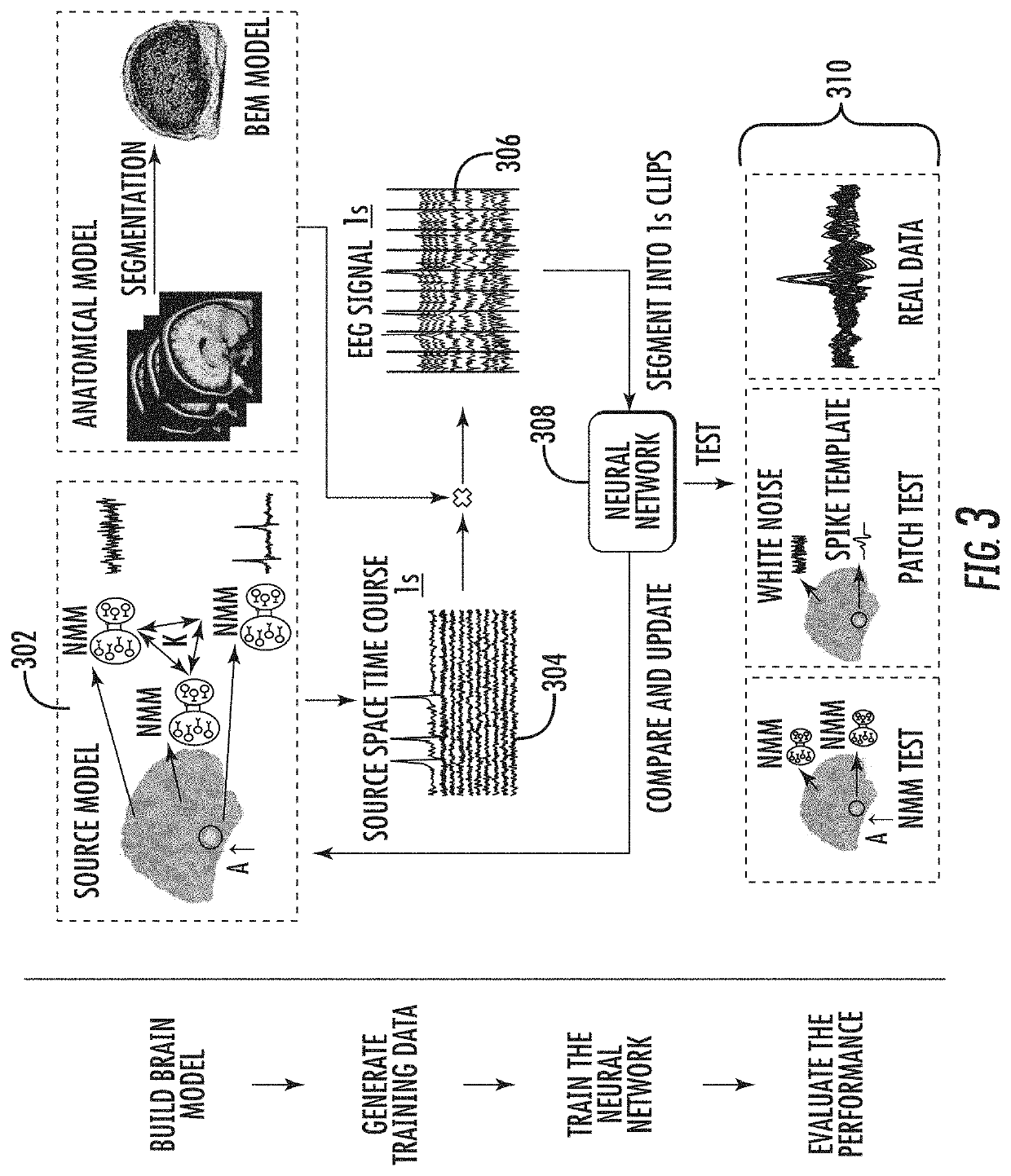Methods and apparatus for electromagnetic source imaging using deep neural networks
- Summary
- Abstract
- Description
- Claims
- Application Information
AI Technical Summary
Benefits of technology
Problems solved by technology
Method used
Image
Examples
Embodiment Construction
[0031]While the present invention can be applied to EEG, MEG and even intracranial EEG data, for simplicity, the invention will be explained in the context of its application to EEG data. Examples of applying the invention on multiple types of scalp data, i.e. EEG / MEG, will be shown. The invention addresses the fundamental problems for training a deep neural network to image and localize brain electrical activity. The invention first addresses the challenge of generating enough training data that resembles real EEG data. Because an actual mapping of source signals to an EEG trace would require invasive probing of the brain of a subject, a suitable quantity of data for training a deep neural network is unavailable. Additionally, the invention addresses the robustness of a model trained on these source models in comparison to variations in the input data. Finally, the invention addresses how well a model trained in accordance with the present invention performs, given real EEG or MEG ...
PUM
 Login to View More
Login to View More Abstract
Description
Claims
Application Information
 Login to View More
Login to View More - R&D
- Intellectual Property
- Life Sciences
- Materials
- Tech Scout
- Unparalleled Data Quality
- Higher Quality Content
- 60% Fewer Hallucinations
Browse by: Latest US Patents, China's latest patents, Technical Efficacy Thesaurus, Application Domain, Technology Topic, Popular Technical Reports.
© 2025 PatSnap. All rights reserved.Legal|Privacy policy|Modern Slavery Act Transparency Statement|Sitemap|About US| Contact US: help@patsnap.com



